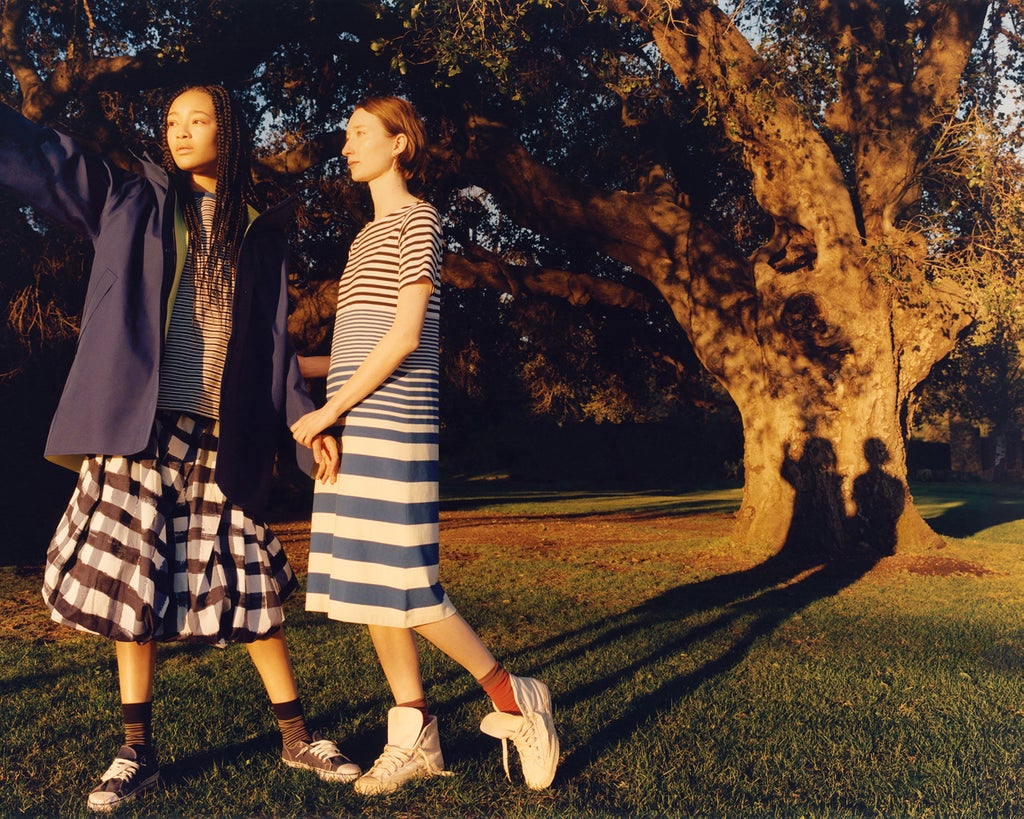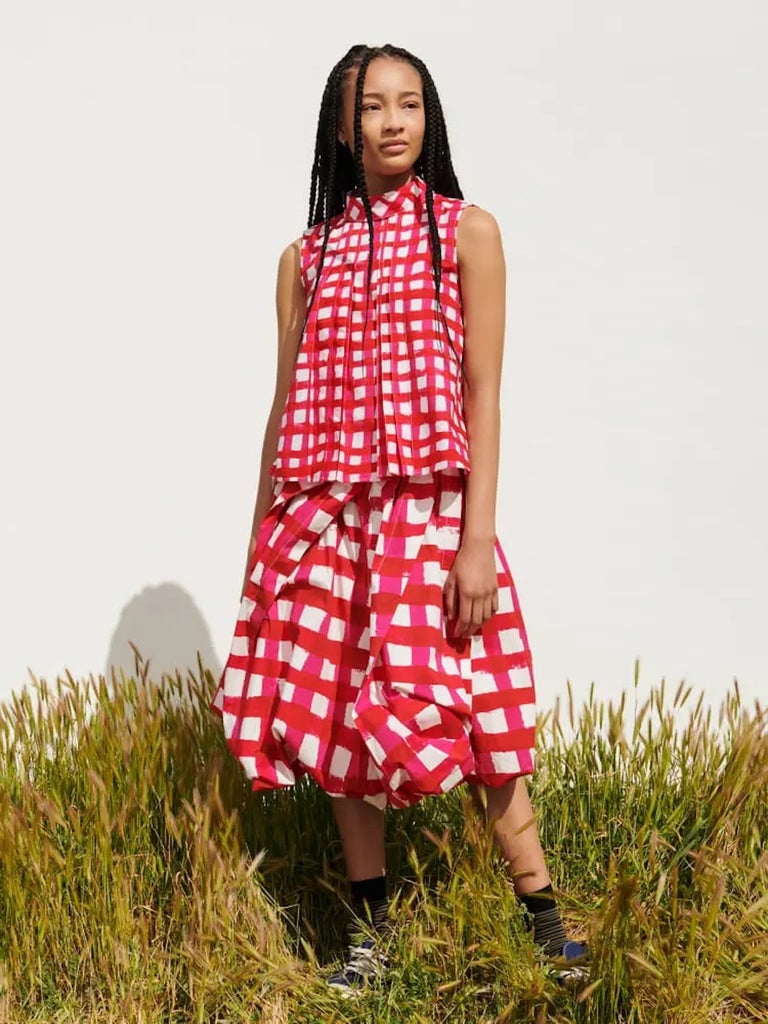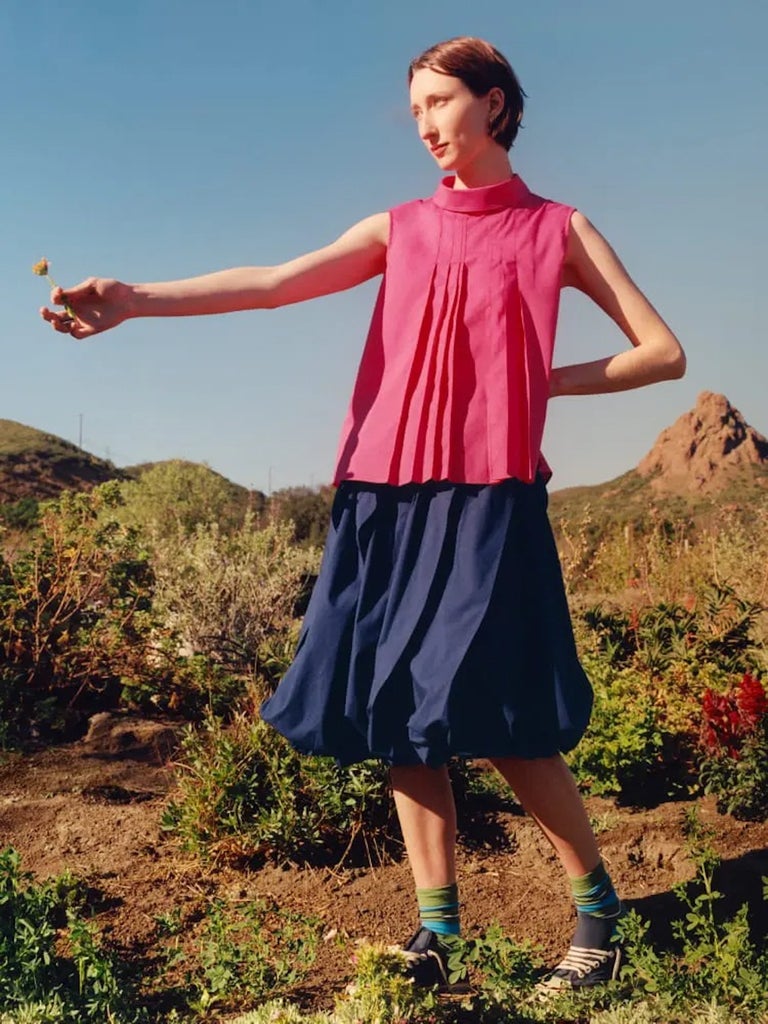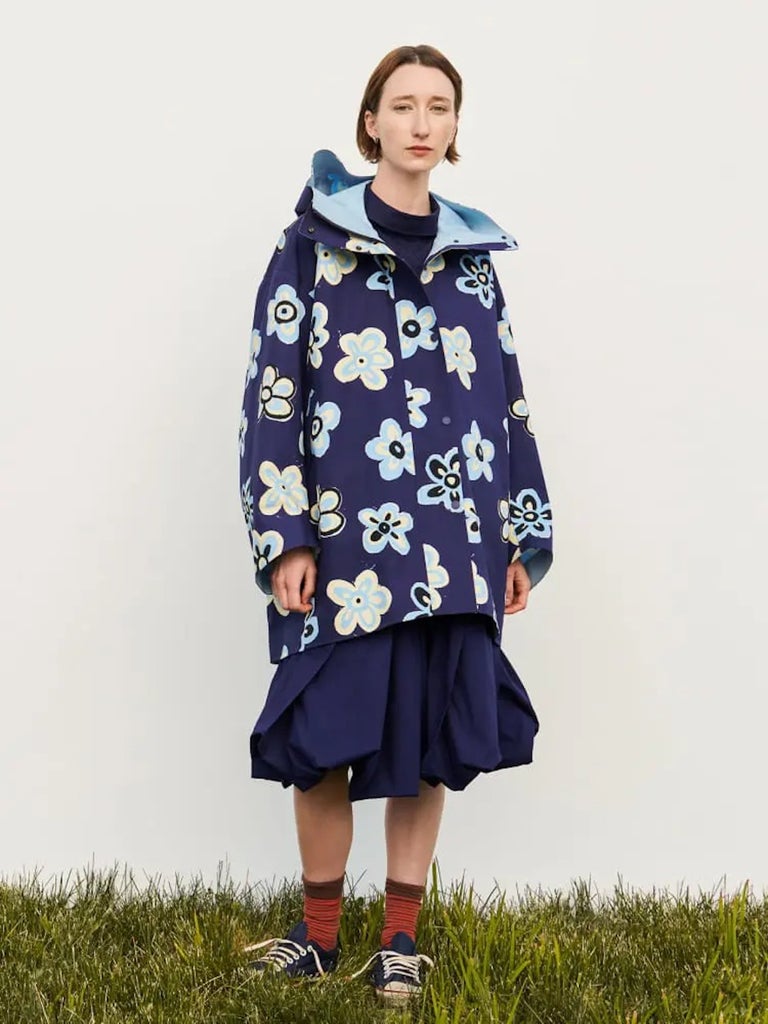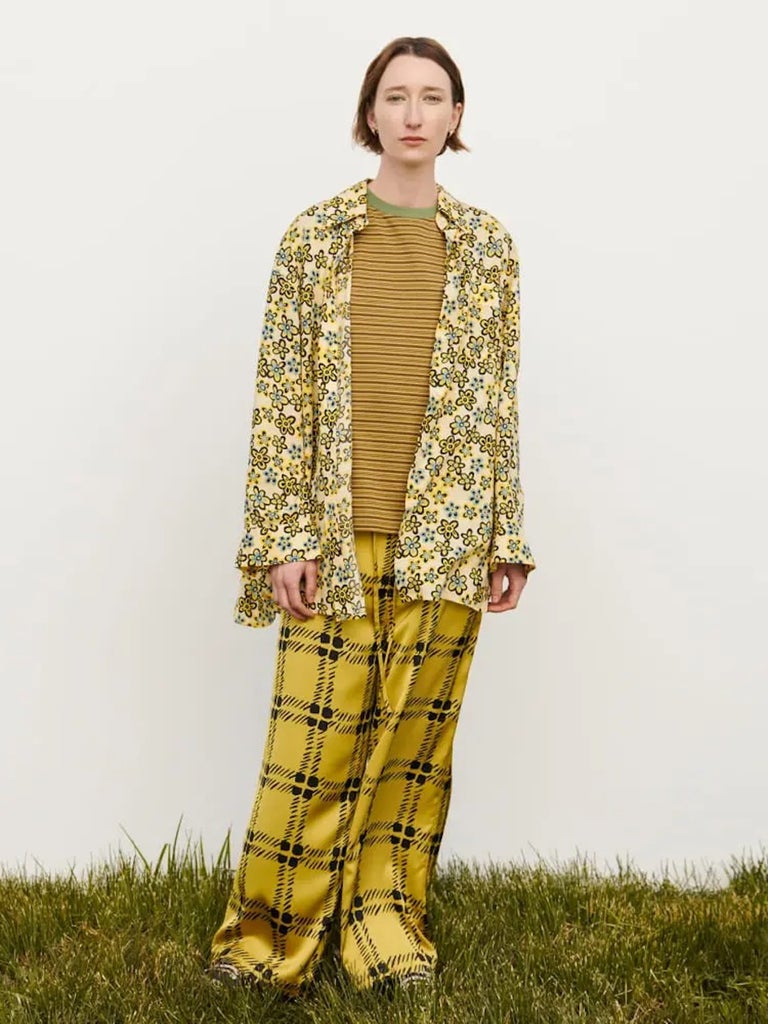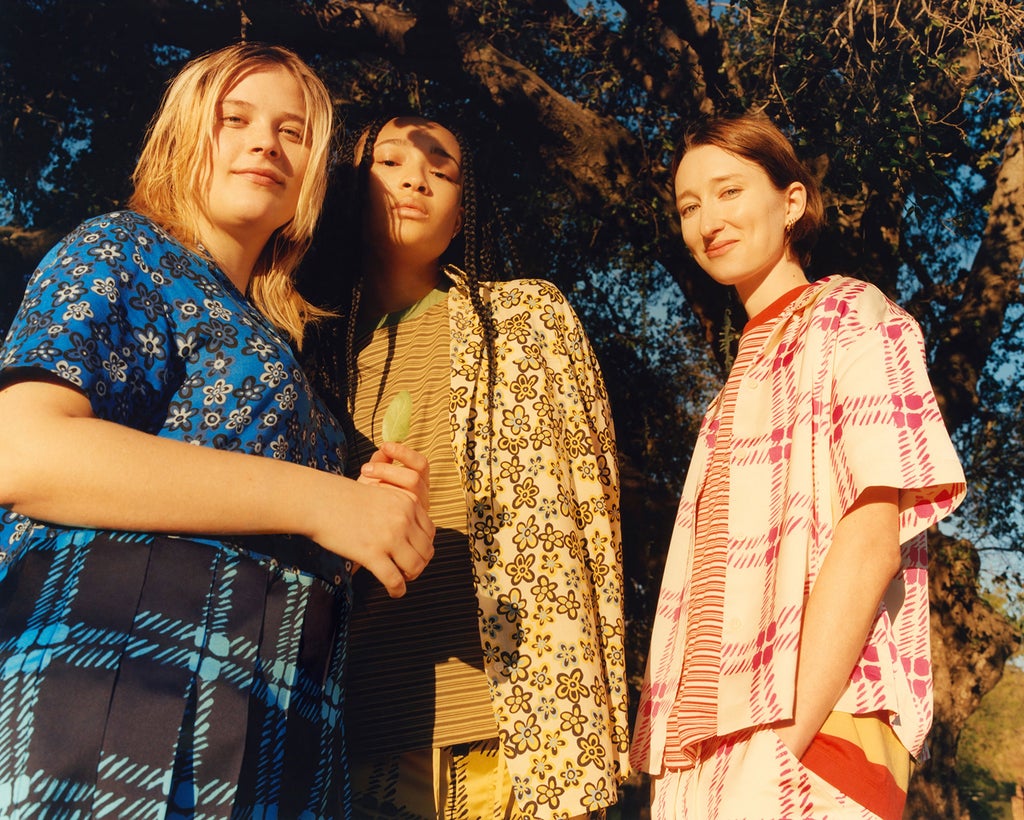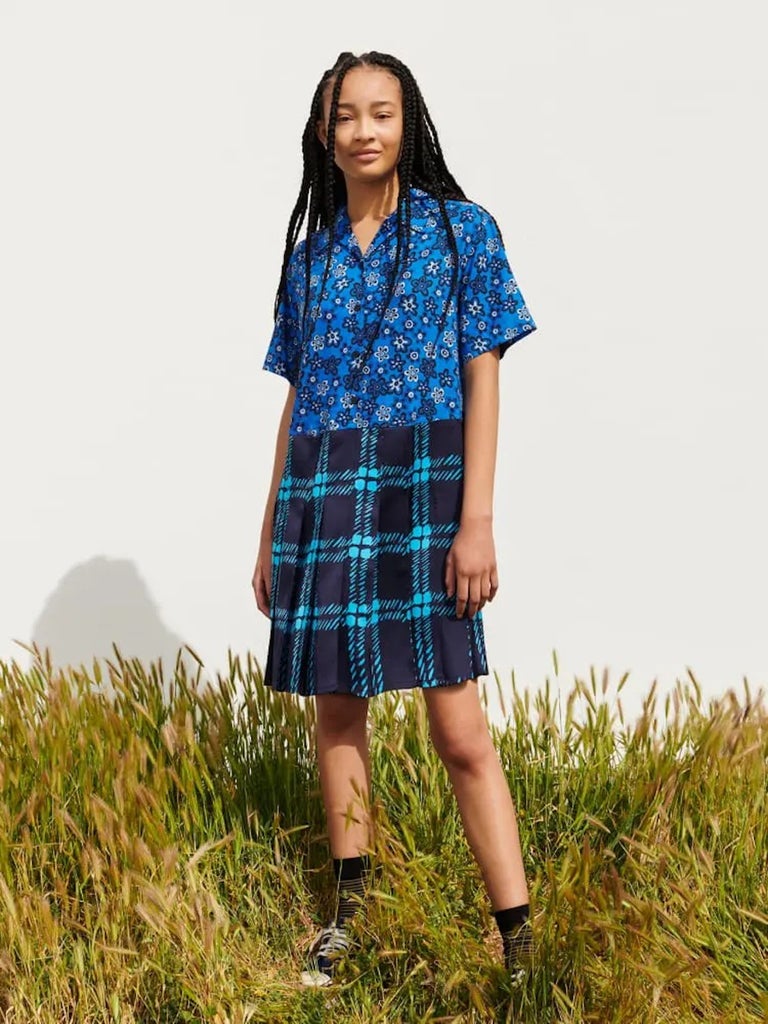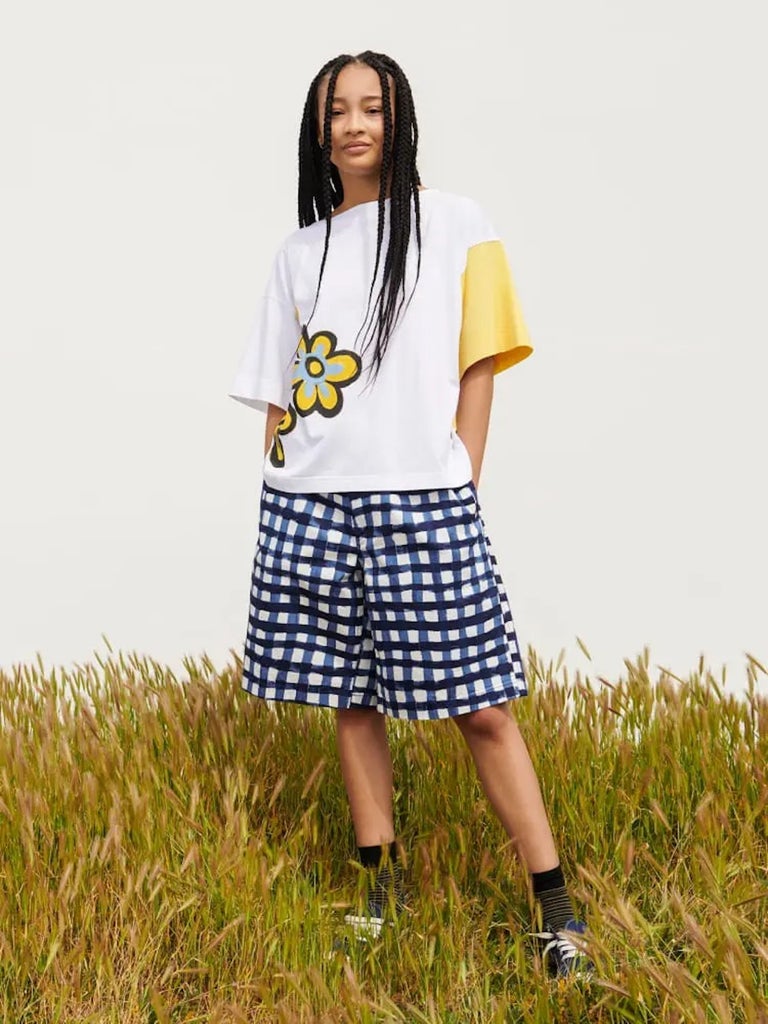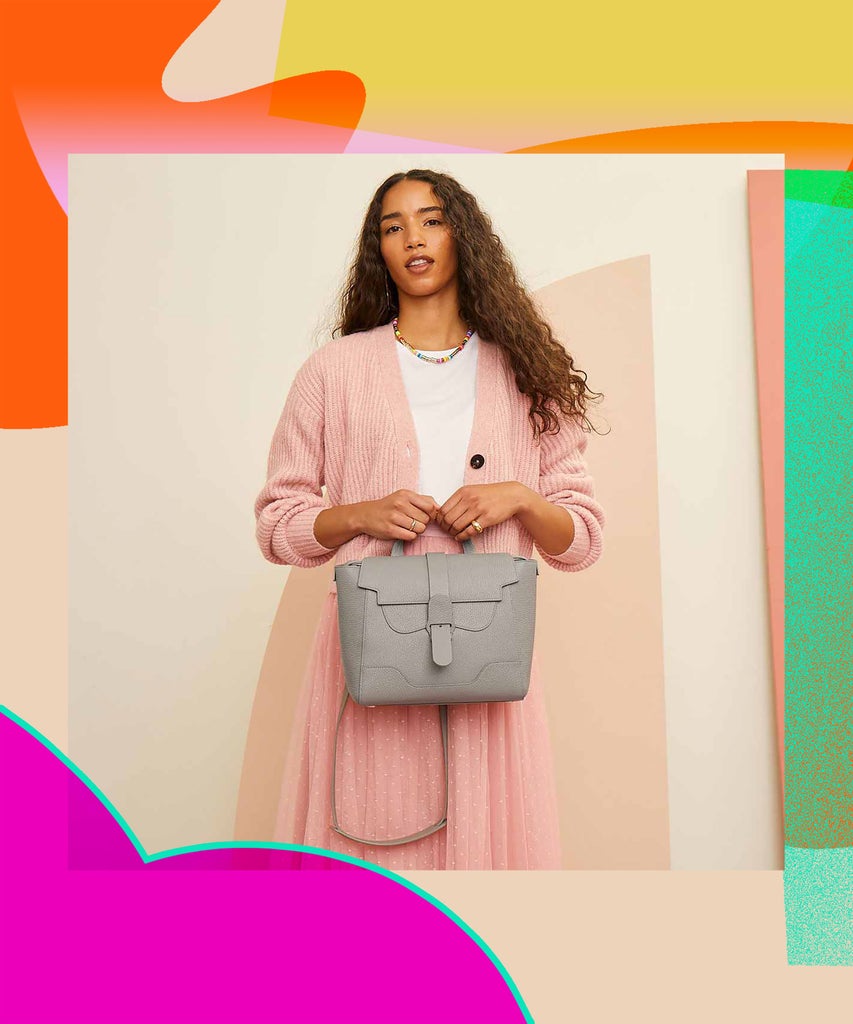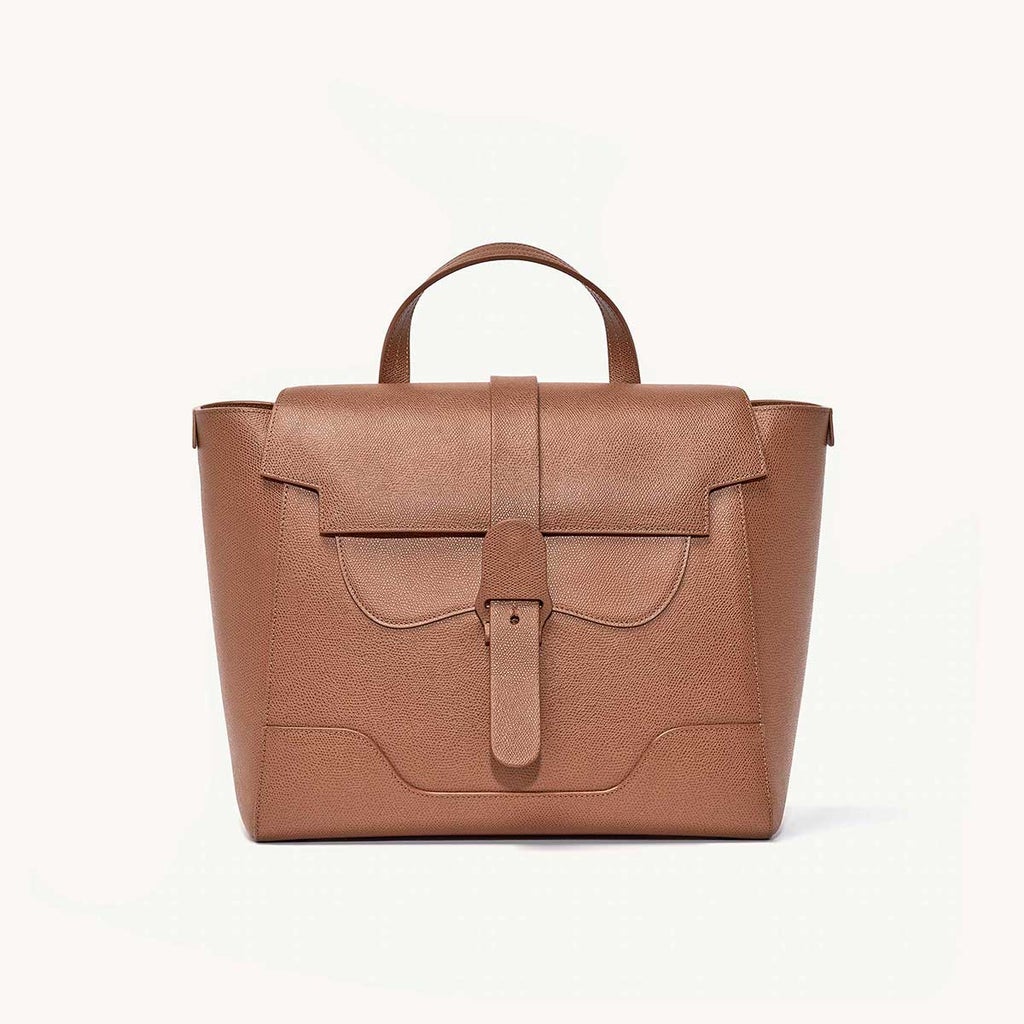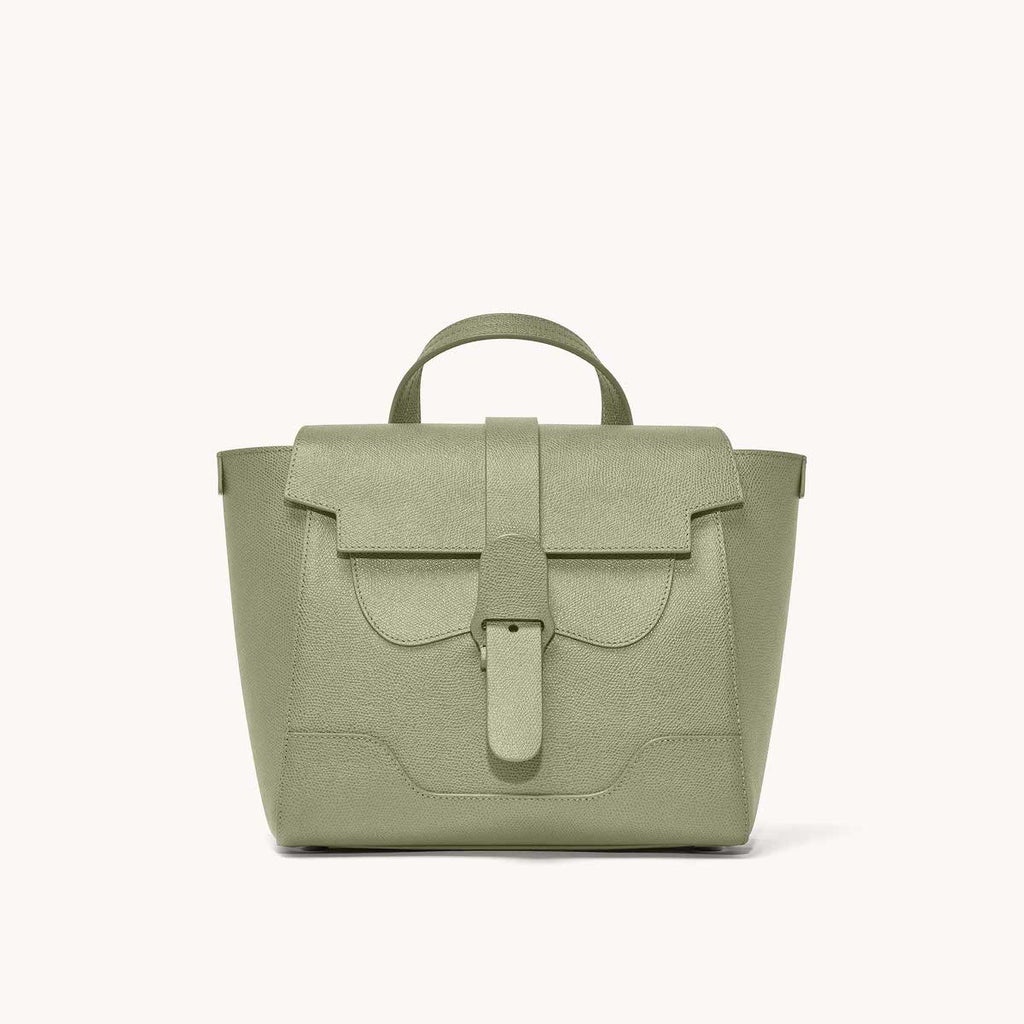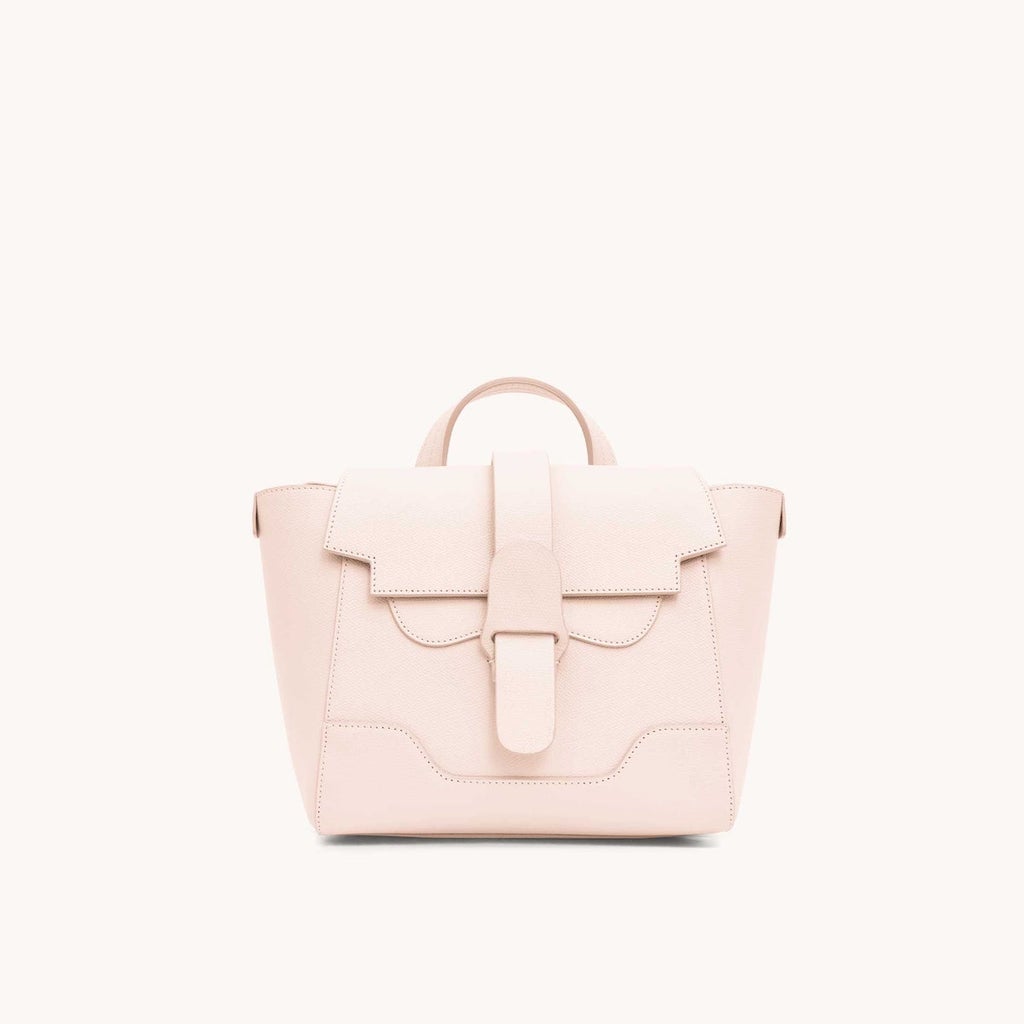
Sam Bennett started 2020 with a resolution: The creative would no longer buy new things, unless there was a real necessity for the item or if it was unavailable secondhand. A few months later, the pandemic struck. While there wasn’t a need to buy any clothing when the world went into lockdown, faced with the four walls of her New York City apartment, Bennett’s penchant for DIY went into overdrive. With the help of her friend Rachel Smith, Bennett learned how to darn, a mending technique that involves filling in holes in knits and wovens.
“I had a lot of guilt about making [new things] because of the [environmental] crisis that we’re in, but when Rachel showed me how to darn, it felt like the perfect remedy to my problem of feeling bad producing more, because I was already dealing with the existing,” says Bennett.
After, according to Bennett, bonding over “repair work as an art form,” the two launched Repair Shop, a studio dedicated to the maintenance of apparel, among other items. After their first test workshop sold out, according to Smith, “we were like, ‘Okay, I guess there’s an audience for this.’”
Like patchwork and other forms of clothing repair, darning has been around for centuries, before mass production made it easier to replace an item, rather than repair it. Lockdown boredom aside, it is currently experiencing a surge in popularity right now — and for a good reason. Unlike pottery or weaving, it’s relatively cheap to get started (all you need is a darning needle, yarn, scissors, and a piece of hard, round fruit or a darning mushroom to use as a tension device). And, unlike other DIY activities, which sometimes require more focus and expertise, it’s fairly easy to do while watching Love is Blind on Netflix.
According to Sandra Goldmark, director of campus sustainability and climate action at Barnard College and author of the book Fixation: How to Have Stuff Without Breaking the Planet, even pre-pandemic, there was an interest in repair as a form of “backlash against fast fashion.” But it was “during the pandemic [that] many individuals all of a sudden had time to engage in activities that speak to this growing dissatisfaction with the large system. Mending, darning, and crafting are all ways to feel more connected to the things we own, and to take a small personal step towards a healthier pattern of consumption.”
During the workshops, which take place at Brooklyn’s Greenpoint Library as part of Repair Hub‘s year-long project, Bennett and Smith go over the history of garment repair before explaining how to darn, which involves using weaving warp and weft stitches on the fabric to cover the hole. Depending on the garment and yarn, you can make this stitching essentially invisible, but Bennett and Smith prefer “visible mending,” which they see as a declaration that says, I refuse to put this garment in a landfill.
This is a big statement at a time when, according to the non-profit Fibershed, “one garbage truck of textiles goes to the landfill or incinerator every second… and more than half of garments produced these days end up in a landfill within one year.” And while sustainable fashion is billed as an ethical alternative, it’s still a function of capitalism: persuading people to buy more stuff.
“Unfortunately, I don’t think there is such a thing as sustainable fashion,” says Sarah Nsikak of La Réunion, a clothing brand that uses vintage, antique, or deadstock materials. “There is a way to make things responsibly, but sustainability would be to make less or to stop making things entirely. Capitalism will never allow that, so the facade of sustainability lives on to exonerate brands that greenwash and do the bare minimum.”
Nsikak is part of a small but growing cohort of designers and fashion insiders who are taking up mending in response to fashion’s growing problem of excess waste: In April, she attended a Repair Shop workshop hosted RefashionWeek NYC, an annual event hosted by donateNYC and the Sanitation Foundation with the goal of reducing textile waste and reimagining the fashion industry via events that aren’t just runway shows. Since launching in 2019, it has incorporated upcycling and repair workshops into its programming to meet demand. (Alissa Westervelt, senior manager of donateNYC, said the repair sessions this year, which included Repair Shop, were “some of our most popular.”)
Another attendee, Paola Shayman, joined a Repair Shop workshop on February 13 to add to her growing arsenal of DIY skills: “In the beginning of the pandemic, I did an online workshop for dyeing clothes with natural dyes, and another for beginner’s sewing. My hope is that I’ll eventually build up enough skills in this world to no longer have to rely on purchasing clothes from large retailers.”
Shayman’s aim of divorcing herself entirely from big fashion brands is reflective of a larger shift in consumer mindset. According to a 2020 survey by Genomatica, 52% of American shoppers “believe that sustainability is important,” but 48% “don’t know how or where to find sustainable clothes.” It’s a conundrum made worse by greenwashing, where brands falsely advertise their products as environmentally friendly. Moreover, truly sustainable brands are often prohibitively expensive. Mending, on the other hand, is a hobby that almost anyone can adopt. “With mending, you’re averting waste. You’re not creating waste,” Smith says.
Of course, the mending movement isn’t just about clothing; the repair-reuse ethos can extend to almost everything we own. “In the United States especially, we have everything that we need and more, and especially as a designer, I think we’re at the point that it’s irresponsible to design new, unless it’s really, really necessary,” says Bennett. “Once you realize you can fix something, where else can it lead? The power of our own hands is really exciting.”
Like what you see? How about some more R29 goodness, right here?
Is Mushroom Leather The Future Of Eco-Fashion?

